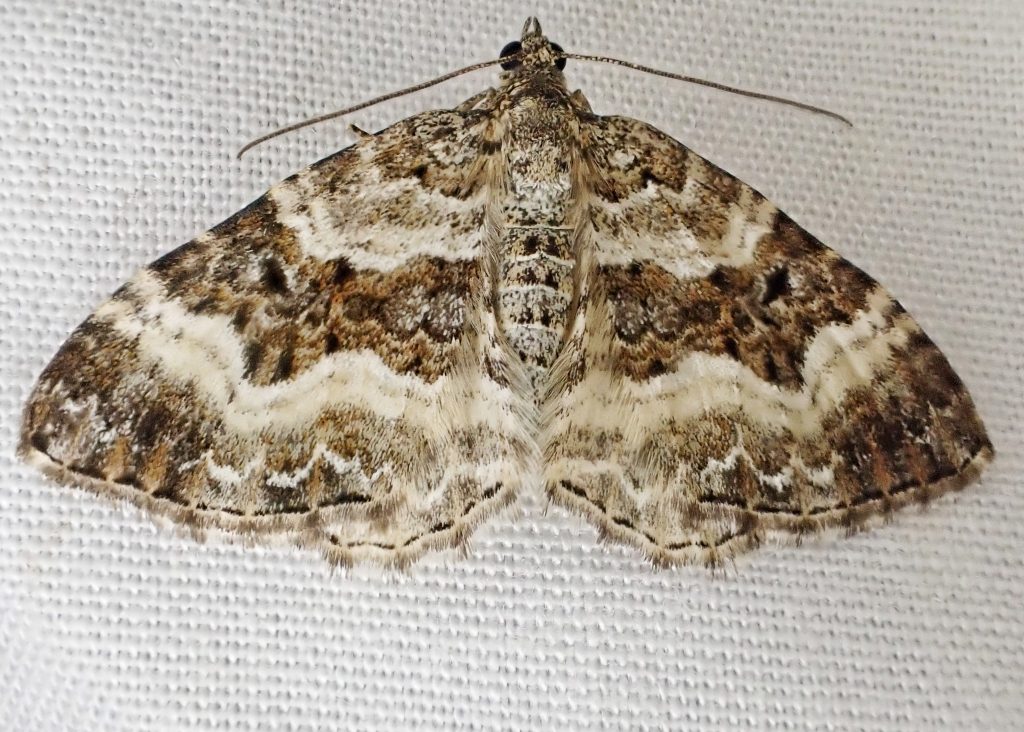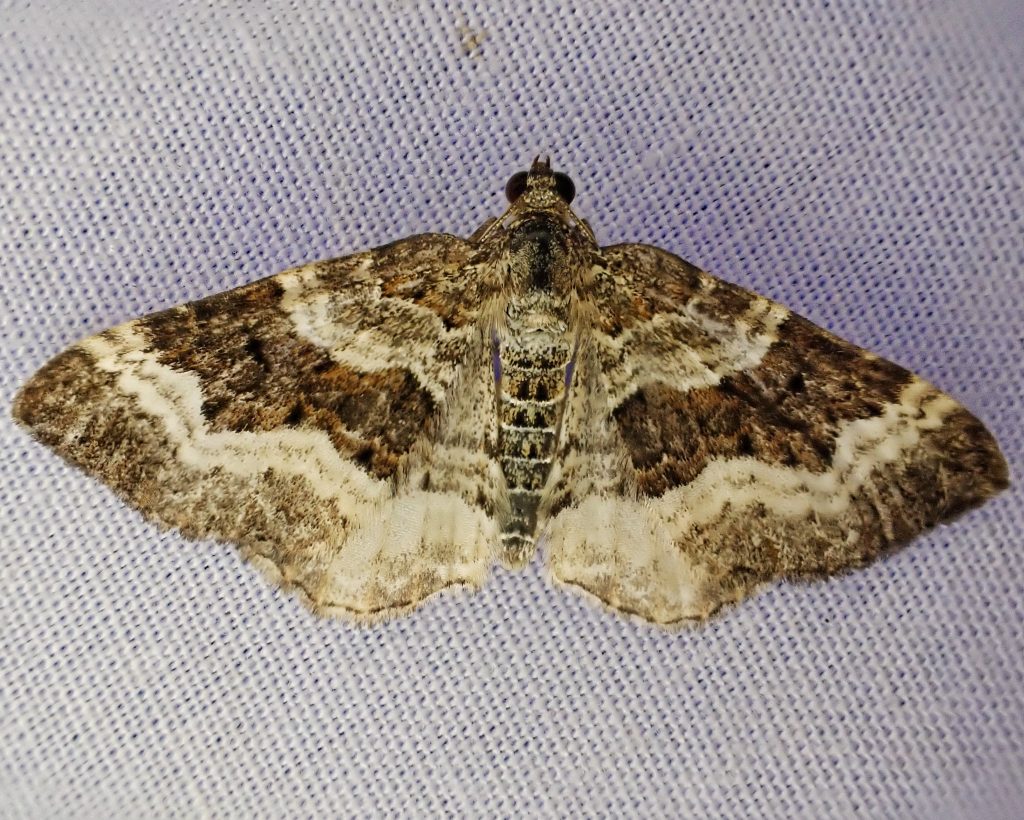
I see this handsome little geometer so often at my lights that I often forget to photograph it, although it doesn’t often visit in large numbers. But Epirrhoe alternata (White-banded Toothed Carpet Moths) were by far the most common moth at my lights when I was up by the Sediment Dam the other night, with about a dozen of them paying a call, so I was moved to document them and write up a profile. One of the reasons they are common is that their larval hosts are the bedstraws (Galium spp), and they grow along almost every forest road I know of. I’m not sure why they aren’t usually that abundant, but I suspect their larvae must feed many creatures.
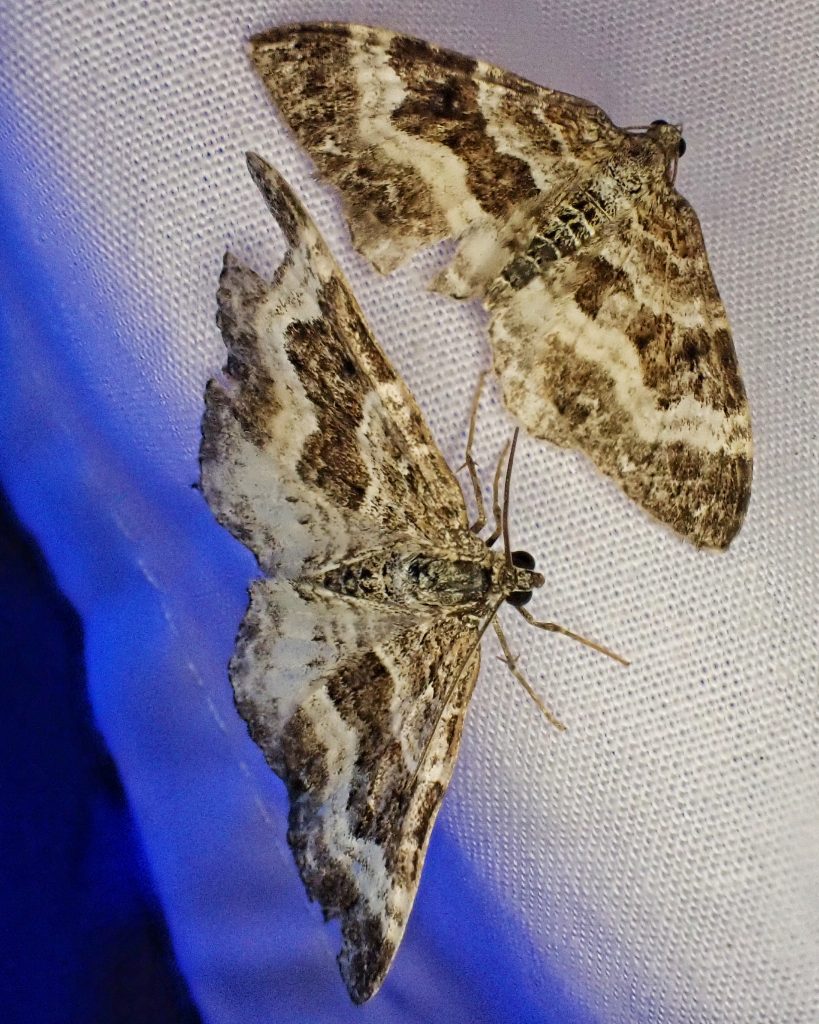
Description– “A medium-small size (wingspan 2-2.5 cm) broad-winged dull charcoal and white moth. Forewings dull black or dark grey, crossed by a doubled white antemedian and prominent white postmedian band, the later with a faint grey line splitting it in two. Terminal areas grey, with upper half broader and darker, divided by a scalloped white line. Forewing discal spot a small black oval. Hindwings lighter grey, crossed by a series of obscure pale wavy lines, the white postmedian band wider and more prominent. Sexes similar; antennae in both sexes densely and finely ciliate.” Epirrhoe alternata – University of Alberta Museums Search Site
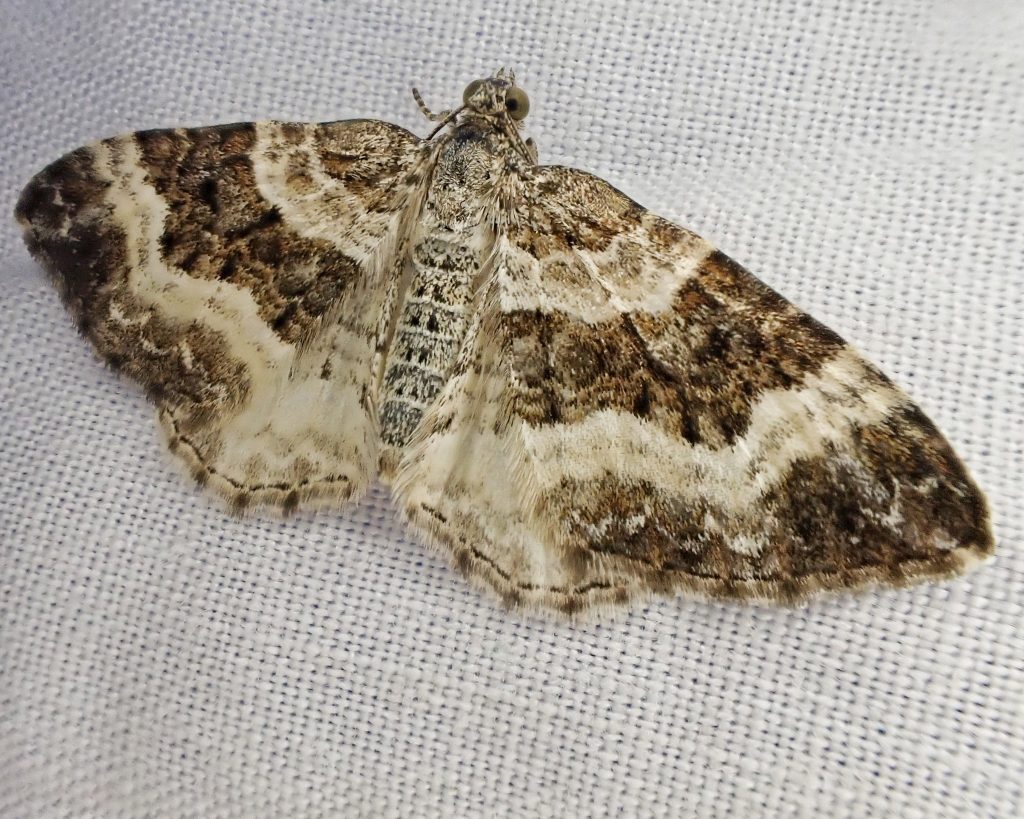
Similar species– Euphyia intermediata has less distinctly contrasted band near the forewing base, and usually less dark coloring in the sub terminal area, except for a blotch near the apex; Xanthorhoe lacustrata has pale subterminal area with a blotch near the apex.
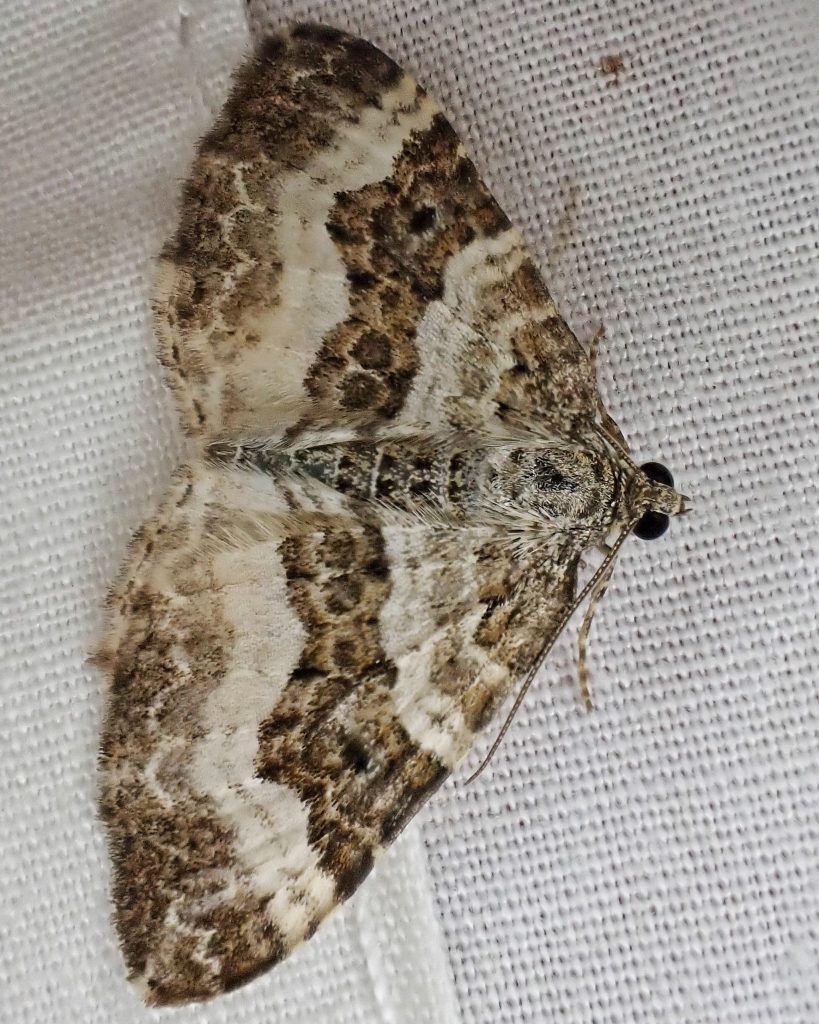
Habitat– Open forests and forest edges where it’s larval foodplants grow, which are various Galium spp (bedstraws)
Range– “holarctic: occurs throughout Eurasia; in North America, ranges across the northern US, plus every province and territory of Canada.”Species Epirrhoe alternata – White-banded Toothed Carpet – Hodges#7394 – BugGuide.Net; in the PNW it is found region wide in appropriate habitat; mostly absent from shrub steppe.
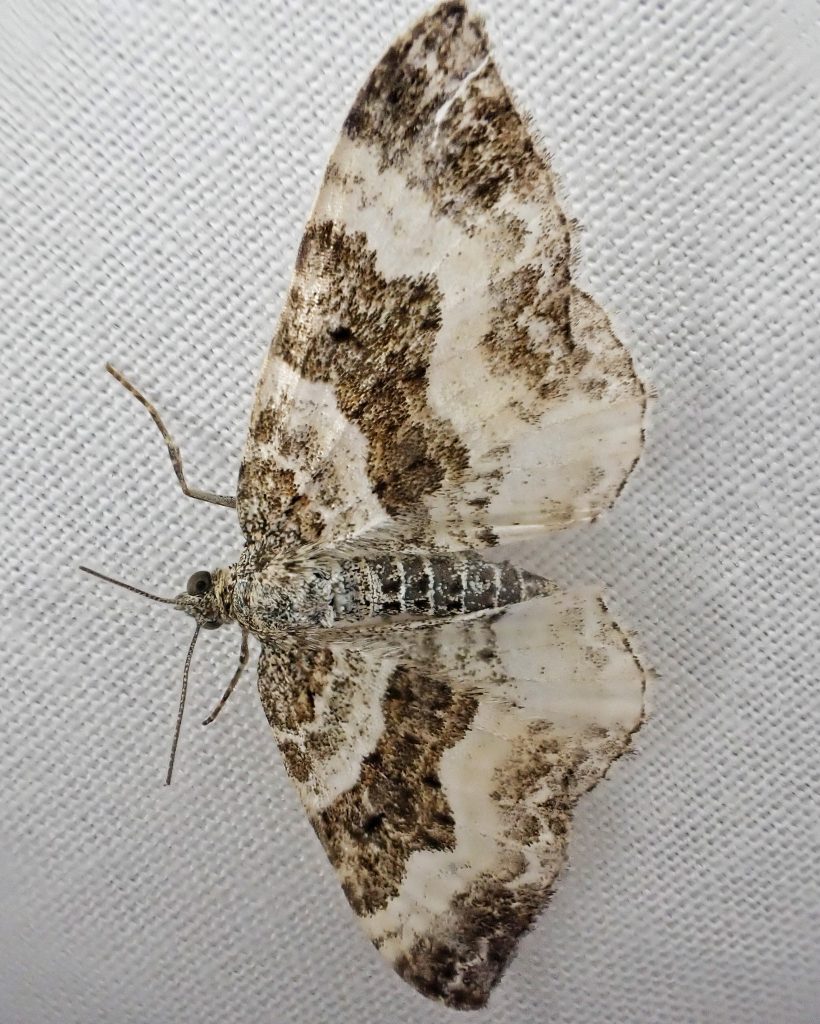
Eats-“Larvae feed on species of bedstraw (Galium).” Epirrhoe alternata – University of Alberta Museums Search Site
Eaten by– Presumably a host for parasitoids in Hymenoptera and Diptera, and probably preyed upon by insectivores of all classes, but I can find nothing specific for this species.
Adults active– Adults of this species may be found flying in our region from May into September.
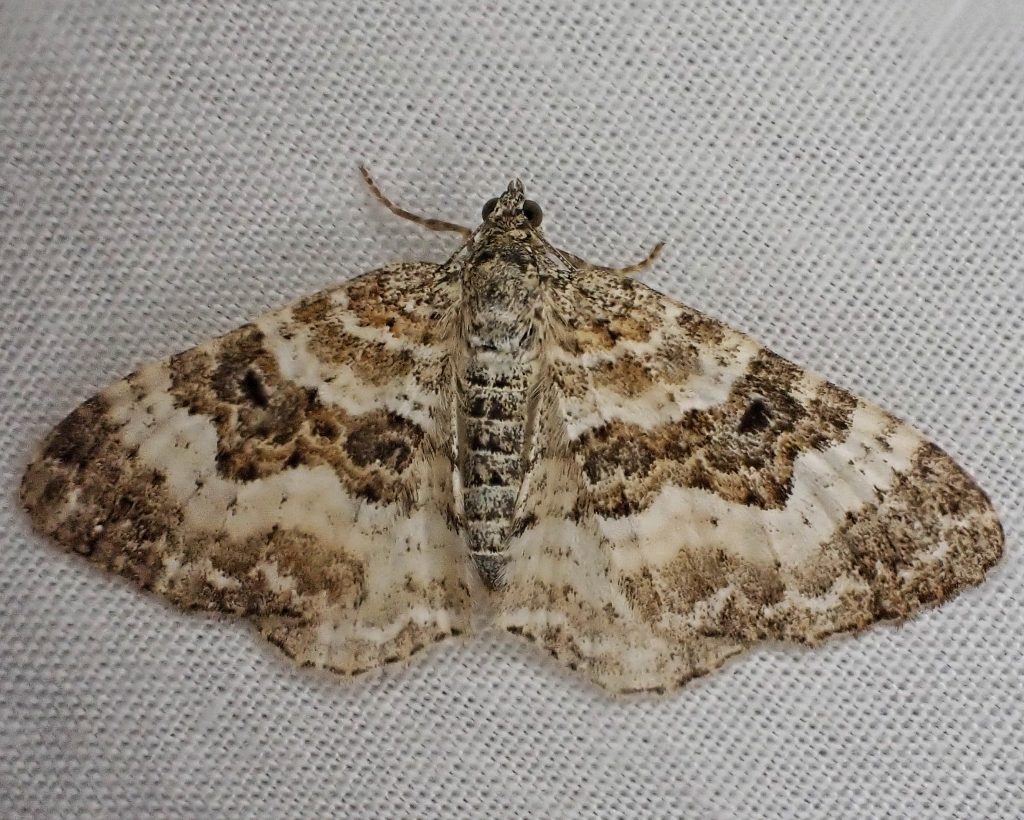
Life cycle– Possibly bivoltine in good conditions; overwinters as pupa.
Etymology of names– Epirrhoe is from the Greek word for ‘flood/river’, and refers to the wavy ‘rivulets’ on the forewing. The specific epithet alternata is from the Latin word for ‘alternate’, and references the alternating light and dark bands on the forewing.
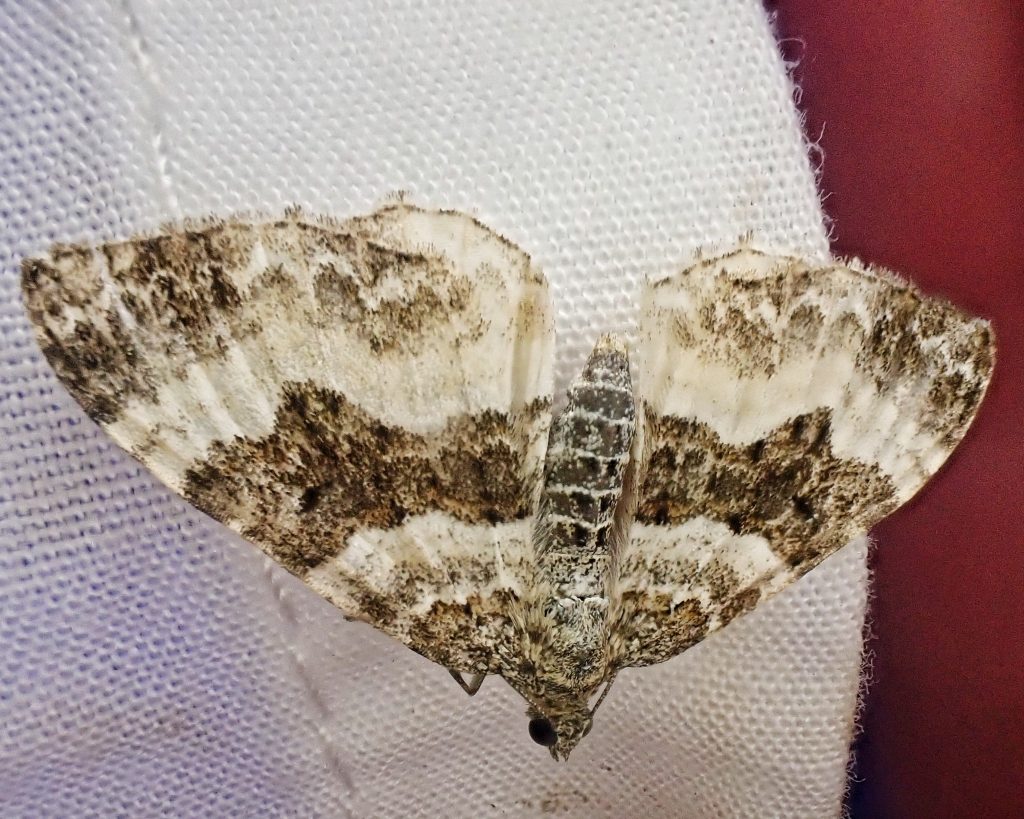
Epirrhoe alternata – University of Alberta Museums Search Site
Species Epirrhoe alternata – White-banded Toothed Carpet – Hodges#7394 – BugGuide.Net
http://mothphotographersgroup.msstate.edu/species.php?hodges=7394
